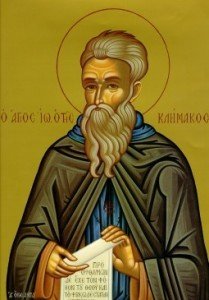 I would continue sharing thoughts on the 28th Step of John’s Ladder, PRAYER. In the last several issues I have suggested that one way to curb distraction in prayer is to make it more physical. Do things that can engage your body in prayer: Make the sign of the Cross, make prostrations, raise your hands, kiss icons or other actions that make your prayer more physical, engage your body and your mind.
I would continue sharing thoughts on the 28th Step of John’s Ladder, PRAYER. In the last several issues I have suggested that one way to curb distraction in prayer is to make it more physical. Do things that can engage your body in prayer: Make the sign of the Cross, make prostrations, raise your hands, kiss icons or other actions that make your prayer more physical, engage your body and your mind.
Thus our prayer is not passive but active, and it involves our whole being – body and soul. All of this can help us create a sense of purpose at our time of prayer, instead of it feeling like an obligation that we hastily squeeze into a free slot of time. In other words, it helps to have a particular place in the home that is set aside for prayer: a small table on which lies a prayer book, a Bible, an incense burner, a candle or vigil lamp; and on the wall above the table icons of Christ, the Mother of God, and our patron saint. For families, it is helpful for parents and children to say a few simple prayers together at this prayer corner. The parents could continue with their own prayers together after putting the children to bed.
What about when we are not at home? When traveling, some find it helpful to have some small, portable icons with them. When we are staying in hotels, we can set the icons up, thus providing ourselves a place of prayer. Of course, prayer is no less prayer without icons. They are only meant to be a reminder of what we do when we pray – that is to lift-up our hearts and minds to God.
What I have been writing about in these last weeks is called “spoken prayer.” There are two other types of prayer that St. John speaks about: Mental Prayer and Prayer of the Heart. In the coming weeks I will share some thoughts about these two other types of prayer. Most people need to begin their prayer life with Spoken Prayer. It’s the first step.
